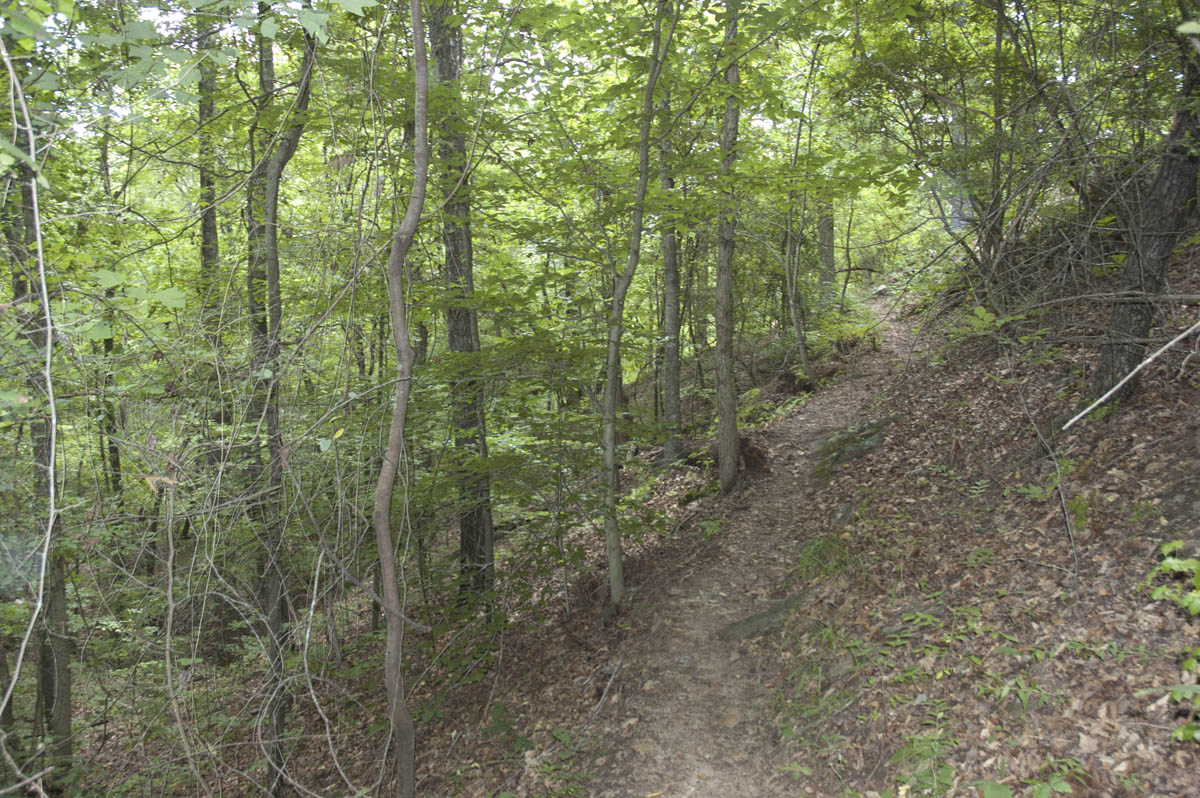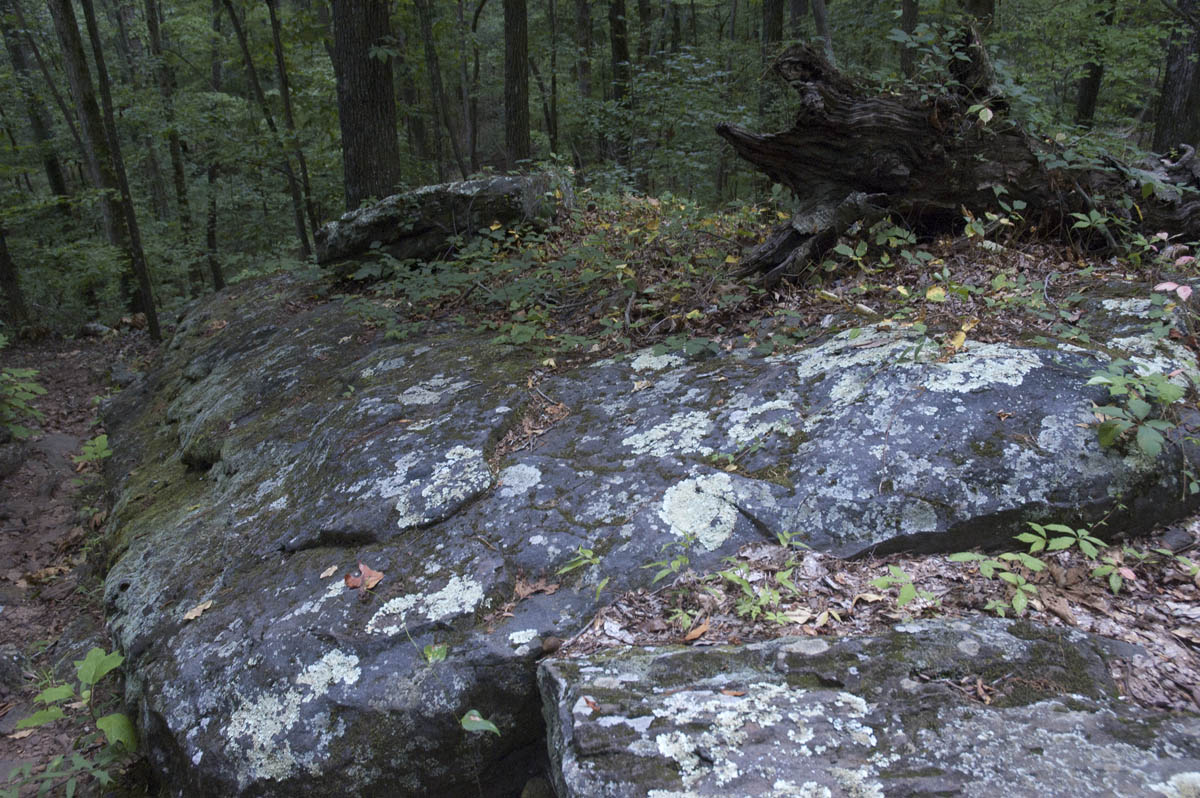Ants in Big Hill Pond State Park, McNairy County, Tennessee
Joe A. MacGown and JoVonn G. Hill
uploaded 7 August 2012
Big Hill Pond State Park is located southwestern McNairy County, Tennessee. This 5,000 acre park includes a nice mix of upland and hardwood bottomland forest. Numerous aquatic habitats are present with Cypress Creek and Tuscumbia River bordering the park, several oxbow lakes and sloughs, and the 34 acre Big Hill Pond, which was created in 1953. This beautiful park has numerous hiking and horseback riding trails that meander through various wooded habitats, some of which have rock outcrops along the way.
Hill and MacGown collected ants at two sites in the Park on 9 July 2012. Our collecting on this hot and humid day was cut short by an incoming storm, but in the couple of hours we were there, we managed to collected 29 species. Our first collections were made along a beautiful rocky nature trail that wound through a steep sloped hardwood forest. We took a lat/long reading near the beginning of this area, which we called Site 1 (35°02'39"N 88°43'54"W). Site 2 included an open grassy area and sloped hardwood forest on the far side of the levee (35°02'50"N 88°43'59"W).

Trail at Site 1 at Big Hill Pond State Park
We spent most of our time collecting at Site 1, which seemed to be the more interesting habitat of the two sites. But, the main reason we spent less time at Site 2, was that a storm moved in shortly after we arrived there, which hastened our departure. The rocky nature trail at Site 1 was reminiscent of Tishomingo State Park in northeastern Mississippi and several localities in eastern Tennessee and Northern Alabama. In fact, it seemed out of place here in southwestern Tennessee. With this terrain, we were optimistic about collecting and hoped we would find something decent. We were not disappointed. Although we only collected 29 species, three of them were new state records: Ponera exotica, Strumigenys angulata, and Temnothorax tuscaloosae! Other interesting finds included Lasius umbratus, Stigmatomma pallipes, and Proceratium crassicorne. Of course, we found many of the common species one would expect in a sloped wooded forest as well. The black Formica subsericea was especially abundant throughout the wooded areas. Please see the full list below.
List of Species collected at Big Hill Pond State Park (arranged alphabetically by genus)
Aphaenogaster carolinensis (Wheeler) Site 1
Aphaenogaster lamellidens Mayr Sites 1, 2
Brachymyrmex depilis Emery Site 1
Camponotus americanus Mayr Site 1
Camponotus pennsylvanicus (DeGeer) Site 1
Crematogaster ashmeadi Mayr Sites 1
Crematogaster lineolata (Say) Site 1
Forelius mccooki (McCook) Site 2
Formica dolosa Buren Site 1
Formica subsericea Say Site1
Hypoponera opacior (Forel) Site 1
Lasius aphidicola (Walsh) Site 1
Myrmecina americana Emery Sites 1, 2
Pheidole bicarinata Mayr Site 2
Pheidole dentata Mayr Sites 1, 2
Pheidole dentigula Smith Site 1
Ponera exotica Smith Site 1
Ponera pennsylvanica Buckley Sites 1, 2
Proceratium crassicorne Emery Site 1
Stigmatomma pallipes (Haldeman) Site 1
Strumigenys angulata Smith Site 1
Strumigenys clypeata Roger Site 1
Strumigenys louisianae Roger Site 1
Trachymyrmex septentrionalis (McCook) Site 2
Solenopsis carolinensis Forel Sites 1, 2
Solenopsis invicta X richteri ? Site 2
Temnothorax curvispinosus Mayr Site 1
Temnothorax pergandei Emery Site 1, 2
Temnothorax tuscaloosae (Wilson) Site 1




